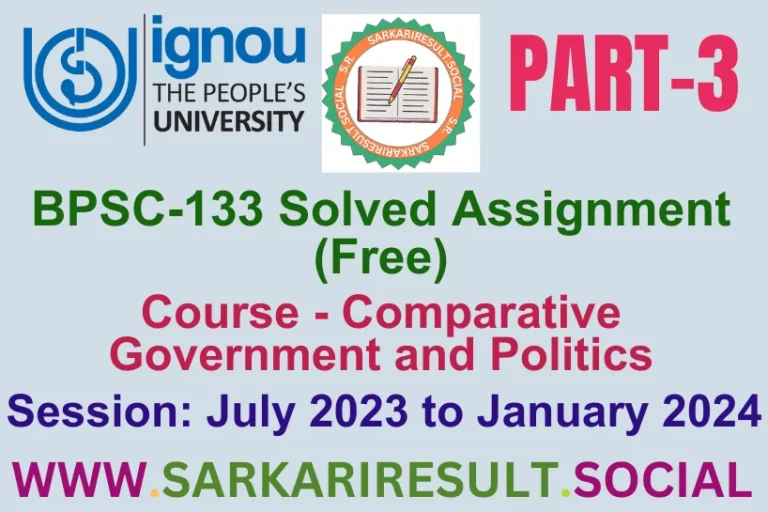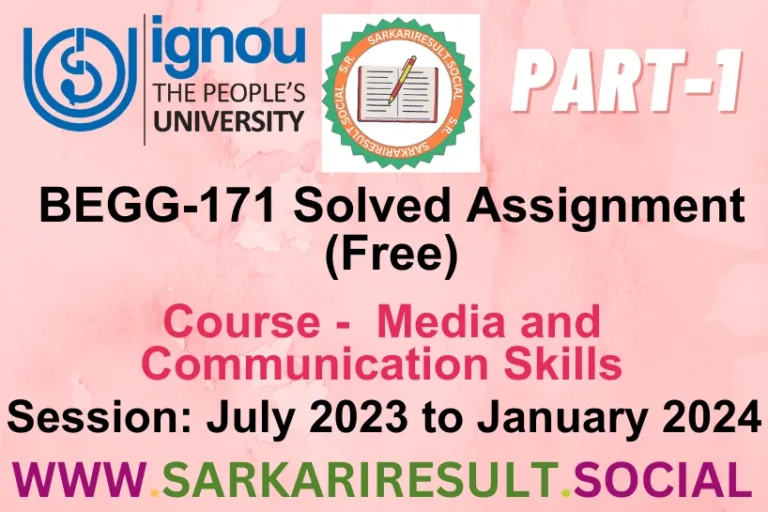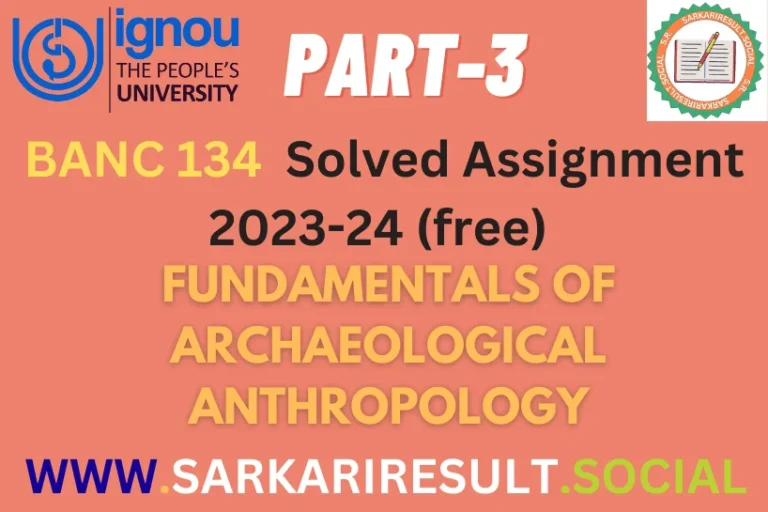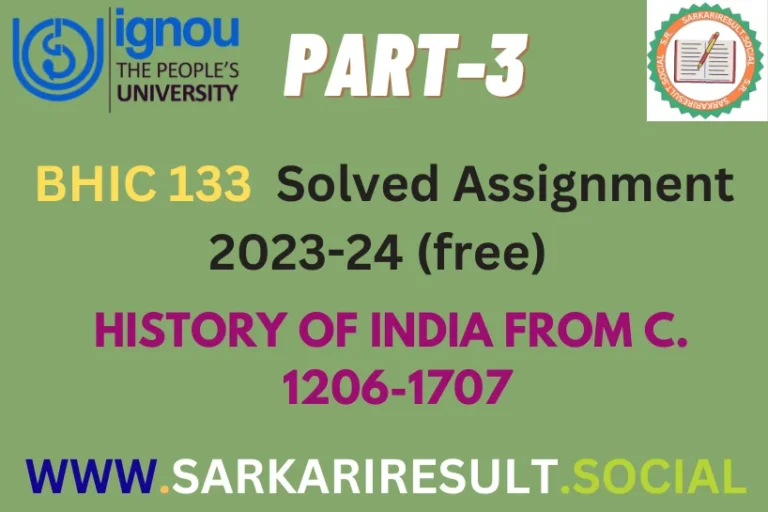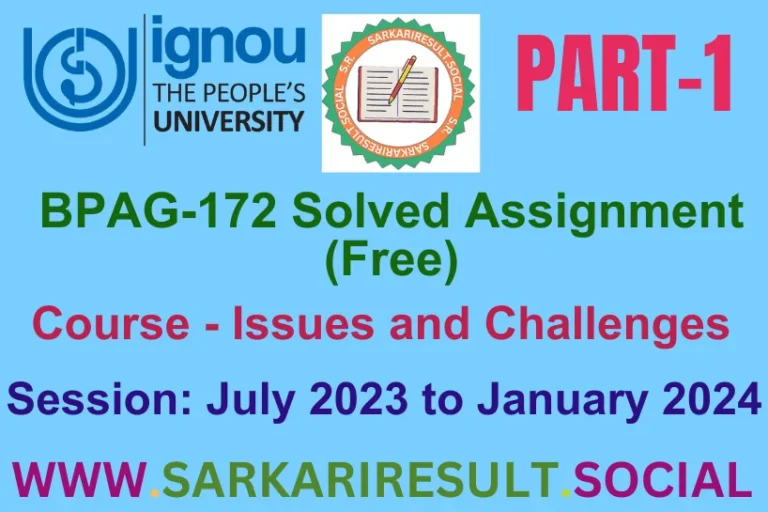BANC-133 IGNOU Solved Assignment 2023-24 (free) Part 2
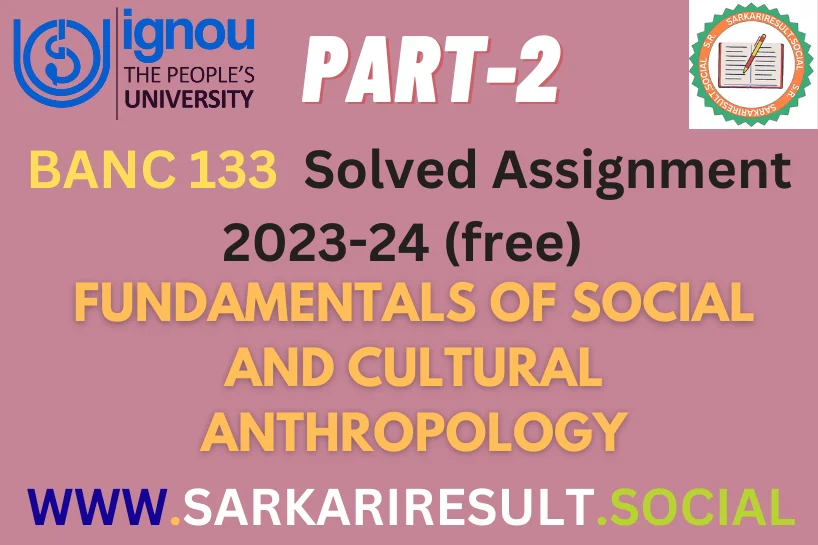
BANC-133 IGNOU Solved Assignment 2023-24 (free) Part 1
“Unlock the world of Social and Cultural Anthropology with these BANC-133 IGNOU Solved Assignment 2023-24 (free) Part 2. In Assignment – B, you’ll find concise answers to three questions, each requiring responses of approximately 250. These solved answers will help you excel in your IGNOU solved assignments for 2023-24.”

a. Discuss participant observation.
Ans. Participant observation is a qualitative research method widely employed in the social sciences, particularly in anthropology and sociology. This approach entails researchers immersing themselves within the community or group they are studying, actively participating in its activities, and keenly observing the behaviors, interactions, and cultural dynamics that unfold. The primary objective of participant observation is to gain an in-depth understanding of the studied group’s perspectives, practices, and social phenomena from an insider’s viewpoint.
The researcher assumes the role of a participant-observer, integrating into the natural environment of the subjects under study. This method often necessitates a prolonged and intensive engagement, allowing the researcher to build rapport, establish trust, and gain access to the intricate facets of the community’s life.
BANC-131 Solved Assignment 2023-24 (free) Part 1
The strengths of participant observation lie in its capacity to capture nuanced information that might elude other research techniques. By being embedded within the context, researchers can perceive the subtleties of non-verbal communication, the underlying motivations behind actions, and the unspoken cultural norms that shape behavior. It also permits the exploration of topics that individuals within the group may not readily discuss in formal interviews.
Nonetheless, participant observation comes with certain challenges. Maintaining objectivity can be demanding, as the researcher inevitably becomes part of the social milieu being studied. Ethical considerations, such as informed consent and the potential impact on the studied group, must be carefully addressed.
In summary, participant observation is a methodological approach characterized by immersive involvement in the subject’s environment. It is a valuable tool for exploring complex social phenomena, uncovering hidden cultural dimensions, and gaining a profound understanding of the social world from an insider’s perspective. However, it requires a commitment to ethical standards and a willingness to address the challenges inherent in blurring the lines between observer and participant.
BANC-132 Solved Assignment 2023-24 (free) Part 2
b. Write a note on structuralism.
Ans. Structuralism is a foundational theoretical framework in various disciplines, including anthropology, linguistics, psychology, and philosophy, that emerged during the late 19th and early 20th centuries. At its core, structuralism seeks to uncover the underlying structures, patterns, and systems that shape human thought, language, culture, and behavior. This approach fundamentally believes that understanding the inherent structures governing phenomena can reveal profound insights into the human experience.
In linguistics, structuralism, as pioneered by Ferdinand de Saussure, asserts that the meaning of language arises from the relationships between elements within a linguistic system, rather than inherent meanings of individual words. Saussure introduced the concepts of “langue” (the underlying structure of language) and “parole” (actual speech), emphasizing the study of language’s underlying structure as the key to comprehending its function.
BANC-132 Solved Assignment 2023-24 (free) Part 3
In anthropology, Claude Lévi-Strauss applied structuralism to the study of culture and society. He argued that underlying universal structures, known as “mental structures” or “binary oppositions,” govern the formation of myths, kinship systems, and social institutions across different cultures. By identifying these structures, anthropologists could gain insight into the commonalities and variations within human cultures.
Structuralism also found its way into psychology, where it influenced thinkers like Jean Piaget and his study of cognitive development. Piaget’s stages of development, for example, illustrate how children’s cognitive structures evolve over time.
While structuralism provided valuable insights into the study of language, culture, and cognition, it faced criticism for its rigidity and limitations in accounting for individual creativity and historical change. Over time, it gave way to post-structuralist and postmodernist theories that challenged its fixed, deterministic view of structures.
BANC-132 Solved Assignment 2023-24 (free) Part 1
In conclusion, structuralism is a significant intellectual movement that emphasizes the investigation of underlying structures in various fields. It has shaped the way scholars approach the study of language, culture, and cognition, providing valuable insights into the fundamental aspects of the human experience. Despite its historical significance, structuralism has evolved and faced challenges in contemporary academic discourse.
c. Discuss the mechanisms of culture change.
Ans. Culture change, the transformation of a society’s shared beliefs, values, norms, and practices over time, is a complex process influenced by various mechanisms. Understanding these mechanisms provides insights into how cultures adapt and evolve. Here are some key mechanisms of culture change:
1. Diffusion: Cultural elements can spread from one society to another through diffusion. This can occur through trade, migration, conquest, or communication. As people interact with different cultures, they may adopt new ideas, technologies, or practices.
BANC-132 Solved Assignment 2023-24 (free) Part 2
2. Acculturation: Acculturation takes place when two cultures come into sustained contact, leading to changes in one or both cultures. This can result in the blending of elements from different cultures, often leading to the emergence of a new hybrid culture.
3. Innovation: Innovation involves the creation of new ideas, technologies, or practices within a culture. Innovations can lead to culture change by introducing novel ways of doing things or solving problems. Technological advancements, for example, often drive cultural changes.
4. Cultural Borrowing: Cultures may borrow elements from one another without complete assimilation. This can include adopting aspects like clothing styles, culinary traditions, or language expressions without a full cultural shift.
5. Cultural Evolution: Over time, cultures can undergo gradual changes akin to biological evolution. This can result from generational shifts, environmental changes, or social developments. Societies may adapt to new challenges, leading to cultural evolution.
BANC-132 Solved Assignment 2023-24 (free) Part 3
6. Imposition and Resistance: Sometimes, culture change is imposed by external forces, such as colonial powers, governments, or dominant cultures. However, resistance to such imposed changes can also occur, leading to cultural clashes and preservation efforts.
7. Media and Technology: Modern media and technology, such as television, the internet, and social media, can rapidly disseminate new ideas and values, influencing culture on a global scale.
8. Crisis and Conflict: Cultural change can be catalyzed by crises, conflicts, or significant events. These disruptions can force societies to reevaluate their beliefs and adapt to new circumstances.
9. Demographic Changes: Population growth, migration patterns, and urbanization can alter cultural dynamics by bringing diverse groups of people into contact and changing the social fabric.
10. Educational Systems: Formal education systems play a role in shaping culture by imparting knowledge, values, and worldviews to new generations. Changes in educational curricula can influence cultural attitudes and beliefs.
BANC-133 IGNOU Solved Assignment 2023-24 (free) Part 2
In summary, culture change is a multifaceted process influenced by various mechanisms, including diffusion, acculturation, innovation, borrowing, evolution, imposition, media, crises, demographics, and education. These mechanisms interact and contribute to the dynamic nature of cultures as they adapt to evolving circumstances, both internal and external. Understanding these mechanisms is essential for comprehending how societies navigate the challenges and opportunities of a changing world.

